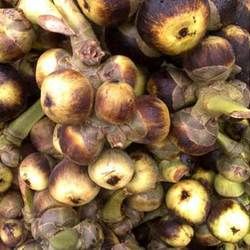
Tamarind
It produces fruits that are rich in potassium, phosphorus, minerals, magnesium, and calcium, and high amounts of carbohydrates and essential amino acids. It also has vitamin C and trace amounts of vitamin A and iron. Over all, the tamarind contributes a great deal as a natural aid to the development of a healthy body. Uses1. Tamarind is used as an Ayurvedic Medicine for gastric and/or digestion problems. 2. The leaves have been traditionally used in herbal tea for reducing malaria fever. 3. The brown, sticky and tangy pulp is used in a variety of delicacies. 4. The fruit is said to cure fever and also been used as a mild laxative. 5. The seeds have been traditionally used to cure diabetes and intestinal ailments. 6. The bark of tree is useful in treating scorpion bites. 7. The fruit pulp is digestive, anti flatulent, cooling laxative and antiseptic. 8. Tamarind seed oil is used for making paints and varnishes.
...more
Sweet palm fruit
A sugary sap, called toddy, can be obtained from the young inflorescence, either male or female ones.Toddy is fermented to make a beverage called arrack, or it is concentrated to a crude sugar calledjaggery. It is called Gula Jawa (Javanese sugar) in Indonesia and is widely used in Javanese cuisine. In addition, the tree sap is taken as a laxative, and medicinal values have been ascribed to other parts of the plant.
...more
Agro Products
Be first to Rate
Rate This